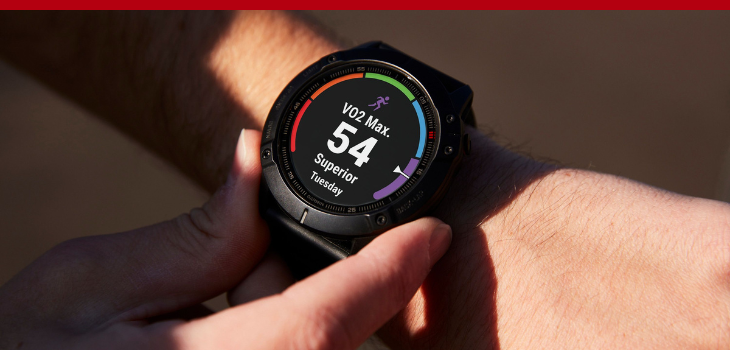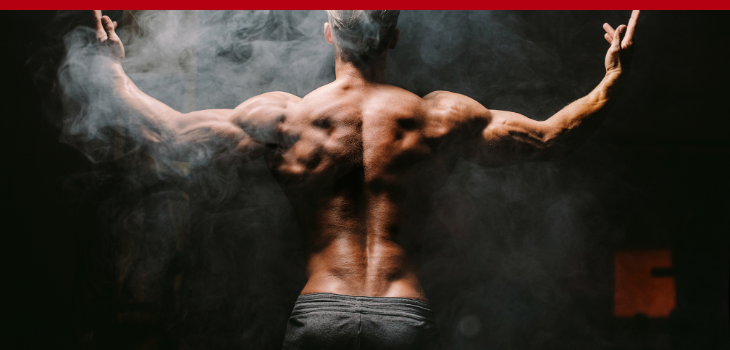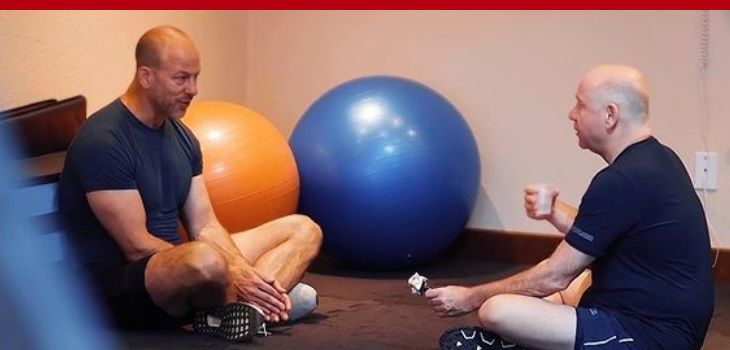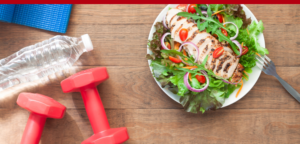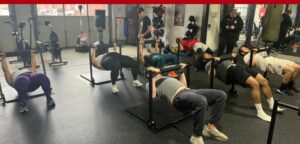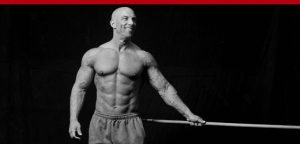by Ted Ryce
579: VO2 Max Explained: The Key to Longevity and a Healthier Life (And How To Improve It)
by Ted Ryce
by Ted Ryce
579: VO2 Max Explained: The Key to Longevity and a Healthier Life (And How To Improve It)
579: VO2 Max Explained: The Key to Longevity and a Healthier Life (And How To Improve It)
more
by Ted Ryce
579: VO2 Max Explained: The Key to Longevity and a Healthier Life (And How To Improve It)
If you are in your 40s or maybe hitting the 50s, and this whole age thing is starting to knock on your door, you are maybe wondering how you can outsmart the aging game? How to keep rocking your best look, feel, and performance, even when time keeps doing its thing?
Well, in today’s episode Ted is going to reveal a key factor that’s not just a game-changer but a crucial predictor for aging, disease resilience, and the secret sauce for longevity.
He discusses the importance of the VO2 max metric for longevity and overall health and shares the best ways to test and improve it. He also reveals the type of exercise you need for boosting VO2 max and some other effective strategies for enhancing longevity, preventing diseases, and optimizing your health. Listen now!
You’ll learn:
- A crucial factor for predicting aging, disease resilience, and longevity
- The most effective method for improving VO2 max
- The type of exercise you need to boost VO2 max
- How to measure your VO2 max
- The most important thing you need to do for your mental and physical health
- Effective strategies for enhancing longevity, preventing diseases, and optimizing your health
- And much more…
Related Episodes:
Zone 2 Heart Rate Training: Cardio Exercise for Longevity and Performance with Ted Ryce
Strength Training for Optimal Health and Longevity with Christian Thibaudeau
Links Mentioned:
Join The Unstoppable After 40 Newsletter
Learn More About The Unstoppable After 40 Coaching Program
Schedule a 15-Minute Strategy Call with Me!
Watch My Body Breakthrough Masterclass
Connect with Ted on X and Instagram
Ready to make 2024 your best year ever?
We just opened spots for our Unstoppable After 40 Coaching Program starting this month.
Together, we’ll craft a personalized plan to reclaim your health and transform your body in a way that fits your busy lifestyle.
If you want to learn more about our program, click here!
We have limited spots, so click here to book a call now!
Podcast Transcription: VO2 Max Explained: The Key to Longevity and a Healthier Life (And How To Improve It)
Ted Ryce: I'm 46 years old right now. I'm going to be 47 on February 2, 2024. And if you're like me, you're in your 40s or perhaps your 50s, and you're wondering, okay, I'm starting to feel this age thing. What can I do to get a leg up on this aging process?
How can I look, feel, and perform my best, despite the fact that I can't stop time from marching on? And today if you're wondering, well, what is there? What is the 80/20 of health and fitness? Especially for longevity, we're going to dive into one of those things today.
It's called your VO2 max. It's something that is just beginning to be talked about in the let's say the mainstream fitness space, and you're only going to hear more about it.
And the reason is that it's arguably the strongest predictor of how well you're going to age, how well you're going to handle diseases or avoid diseases. And in this episode today, I'm going to talk about what VO2 max is and what the best ways are to improve it. But most importantly, we're going to be talking about some protocols and some things to do.
But I've been playing around with this stuff for a long time. I'm going to give some insights from my years of coaching clients and also doing this myself. So, you're going to want to listen all the way to the end. I'm going to have that part at the end.
So again, if you're into longevity, this episode is for you. And welcome to the Legendary Life podcast. I'm your host, Ted Ryce, health expert and coach to executives, entrepreneurs, and other high-performing professionals.
And we produce this show for two reasons. Number one, I've been in this business for almost a quarter of a century now. Seen a lot of things come and go, and I want to save you from going down some of the dead ends that I went down in the past 25 years, which was unfortunately a lot.
And the second thing is if you are a high performer and you're looking to get the same results with your health that you've had in your business or with your career, and you know coaching is the way to do it, you'll know whether or not I'm the right coach for you.
So, let's dive in. VO2 max was something that was talked about in the context of endurance training. So, if you were an endurance athlete, it was something that was important, but it isn't just for endurance athletes. It's a critical health marker that you should check arguably every single year.
And I'll say it like this, I'll be straight with you. It is absolutely crazy that VO2 max testing isn't a standard part of health assessments when you go to the doctor for a checkup. It's crazy. They'll take your blood, take your blood pressure, take a resting pulse and all those things are important.
That said, VO2 max is one of those things. I read a paper that said it's the strongest marker of longevity. It didn't say longevity, it used really sciencey talk about like how it's the strongest predictor of, you know, avoiding or improving your, or lowering your risk of all-cause mortality or something like that.
So, we know that cardiorespiratory fitness, which I'm going to say that's the proper term, we talk about cardiovascular, but that's a bit redundant, cardiorespiratory talks about your vascular system, but also your lungs, because that is one of the important keys here.
So, it's strongly associated with a long healthy life and low levels of cardiorespiratory fitness or cardio are associated with an increased risk of all-cause mortality, which is death from a lot of different things, cardiovascular diseases that makes sense and even cancer.
Not only that, but improving your cardio can significantly reduce the risk of developing chronic conditions like dementia, type two diabetes, and metabolic syndrome. And in the fitness industry, we often focus on workouts for fat loss or body sculpting, but VO2 max goes beyond these. It's about your body's ability to effectively use oxygen.
So, that's pretty fundamental. You can go a few weeks without food, a few days without water, but how long can you go without oxygen? Not very long. About two minutes, I believe, and you start to get brain damage. Anyway, I want to share why I'm currently obsessed with VO2 max right now. Two things happened to me.
One thing is that I got sick. Not once but twice last September in 2023. It sucked. And what's worse is that I was in great shape at the time, so I thought. And I was sure while everyone else was getting sick, I was exercising, my body fat was low, I was performing well in the gym, I was sleeping well, tracking my sleep stats with Oura taking a bunch of supplements that I was trying for health optimization, but I still got knocked on my ass twice.
And that got me thinking, if I'm in such great shape now, eating well, taking all these supplements, what else can I do? What else is left to do to optimize my health to stop this from ever happening again?
The second time wasn't that big of a deal. The second time I got sick in September wasn't that big of a deal. But the fact that it happened twice really, really made me think about my life really. Think about what the hell is going on. But the first time it kicked my butt and it got into my lungs, it messed me up.
And I was taking these supplements that were supposed to help fight off infections, respiratory infections, mucolytic, supplement. I was taking all this stuff, right? And I was taking the standard, everything that you can think of the ginger, the garlic, the zinc, the vitamin C, the N-acetylcysteine. I was taking so much stuff.
And it just didn't seem to make that much of a difference. And I was quite shocked. I was like, okay, I need to figure out like, what can I do here? I never want this to happen to me again. Or if it does when I'm 80, at least it's not going to happen to me in my 40s and 50s, when I feel like I'm in top shape.
And what I found out was that I wasn't as in great shape as I thought. I'm in good cardiovascular shape or was in pretty good cardiovascular shape at the time, but and we're going to talk about this later when we're discussing protocols for boosting your VO2 max. I wasn't in as great a shape as I thought.
I looked great. My strength was good. Again, performing well in the gym on resistance training and if you listen to this podcast, you know I talk a lot about the importance of resistance training. And you also have heard me talk about zone two cardio, which I was doing as well.
So again, we're going to get into the whole zone two thing a bit later and why it's not the best way to train your VO2 max according to science. I know it sounds like clickbait, right? But it's true. So, I dove into the research and what I found out was that VO2 max strongly affects the seriousness of things like the flu, pneumonia, COVID-19.
And, you know, I don't get political on this show, but I will say this. One of the things that came out of the whole COVID-19 thing, and some of the research on it with what it does to your lungs and everything, your heart, and all that, it's like the people who had the lowest cardiorespiratory fitness had the worst symptoms, had the worst. It was more intense worse for people with low cardiovascular fitness.
And the thing is, now I had COVID, it wasn't that big of a deal. I had no idea what I got sick with this time around and didn't bother testing it. But what I would say is like, you know, it is just it's, it's like, I don't want to say a crime, that's too strong of a statement.
But it's crazy. Like I said earlier, that this isn't being talked about by the media, by mainstream medicine. Now mainstream, I did get some of this from mainstream medicine, but they're the people who publish the papers. It wasn't, you know, the people who we deal with, doctors aren't talking about this stuff, right?
So, I also want to point out that, remember my recent series where I said nutrition comes nowhere close to exercise when we're talking about impacts on health? This is another example of it.
You can't eat your way into a high VO2 max, you can also, you can't also lift your way into a high VO2 max. So that was it. That was the first thing that happened. And the second thing that happened is I've recently gotten back into Brazilian jiu-jitsu. For those of you who don't know, I've been training Brazilian jiu-jitsu for 18 years on and off due to injuries. I'm a brown belt, have two stripes, so close to my black belt.
It's crazy that I don't have it, but of course I, I don't deserve it. Cause I haven't put in all the work. And what I mean is crazy. It's like, I keep getting close and then having to stop due to injuries and sometimes inconvenience. So, I made it a point in 2024. I'm going to get my black belt. And it started in the really in 2023. And I guess the middle of the year started training in Brazil and I've been running out of gas during hard training, especially recently after I got sick. And I'm in this new school where they really pushed the pace.
Let me tell you. Maybe you can relate if you've been chasing after your kids and you get out of breath and you're like, whoa, my kid's still running and I needed to take a rest for a second. That's something I've heard a lot from some of our clients who are new parents, but nothing makes me, I don't have kids yet, but nothing makes me feel old like being in Jiu-Jitsu class and just feel like, man, my technique is good, but I isn't getting crushed right now. I can barely breathe.
I feel like I might have a heart attack, even though I know that's not going to happen. It's terrible. And so, I was like, I cannot deal with this. I have to make a change.
And so, when I dove into the science on VO2 Max, I started to realize, look, not only is this something that I need to pay attention to for improving performance, but it's also key for longevity. One of the biggest keys. Like you can do everything else but if you don't do this, it's a problem. You're going to have a problem if you don't do this. I'm going to have a problem if I don't do this. And when I say do this, I mean, boost your VO2 max.
So, let's get into some things that I think are really important to know about VO2 max, how to test it, and of course how to train it. So, as we age, some things are inevitable. Our hair turns gray or you see pictures of me, falls out in my case, our skin gets weird. But the great news is that, yeah, some of those things we just can't change, they're inevitable.
But when it comes to our strength, our muscle mass, our body fat percentage, and yes, our cardiorespiratory fitness, we have a lot of control. There is a bit of bad news with the VO2 max thing.
The current consensus among scientists is that regardless, if you're an elite endurance athlete or someone who's never gotten off the couch, except to, you know, yeah, if you're a couch potato your VO2 max is going to decline, even if you train, even if you show up, even if you never skip a week of training, it declines.
What's crucial here is that although a decline in our cardiorespiratory fitness may be inevitable, the current science shows that the higher you build your VO2 max when you're younger, you can give yourself a big head start.
For example, if you check out the show notes to this episode, I've included a graphic and I'm looking at it right now. It shows how lifelong endurance athletes, they have a much higher VO2 max than then other people to the point where you can be a 70-year-old with a higher VO2 max than a 25-year-old sedentary person. So, let me restate that: if you're an endurance athlete you can have a higher VO2 max at 70 years old than a sedentary 25-year-old.
Think about that. This is huge. And if you're not someone who's been active in the past or especially a lifelong endurance athlete, I'm not.
It doesn't mean you should give up if you're over 40 and don't have that history of endurance exercise. In fact, there's great news for you too. While you may not be able to build that elite level VO2 max now, you're still in a great position to increase it.
In fact, the more out of shape you are, the bigger the gains that you're going to get, it's kind of like when someone first goes into the gym or, or when I get a client who is out of shape and they're thinking, oh, it's going to take so long to get back in shape.
It really doesn't with the right program. The bad news is you're out of shape. You're like years behind on your workouts. The good news is that you're going to build muscle so much faster than I will.
You're going to make changes so much faster than I will and other people who are trained. So, keep that in mind. Said another way, it'll take you minimal time and effort to increase your VO2 max versus someone who is an athlete who it's you're going to have to put in serious time and effort. If you're an athlete.
And even me, I don't have a low VO2 max, but it's, I'm going to have to, it's not that, it's not that I'm getting confused here. Sorry I don't have a low VO2 max, but it's not high either. However, I'm still going to have to work kind of hard to boost it.
So, let's talk about the best place to start. So hopefully I have you pumped up about this idea of VO2 max. And, um, I'll even say this ever since I started training to improve it, I feel so much better even then when I did, when I told you, I felt like I was in top shape, what I meant, I was in top shape. I meant I felt strong, but I wasn't in great endurance shape. I wasn't let's say top-level with my endurance top shape with my endurance compared to my endurance, right? What how I've been, let's say in my 30s.
And since I've started doing this, my mind is sharper, my energy levels are higher. It's really, you can start to feel like, whoa, I'm reversing the clock here a bit. So, let's talk about how to test it because that's the best place. Having a test, it gives you a baseline measurement to assess where you are now and how effective your training is.
So, testing VO2 max can be done in various ways. The gold standard is to go into a lab and test it on a treadmill or cycle or ergometer. And it's going to run you somewhere in the neighborhood of a hundred to 150 US dollars. And listen, I highly recommend this as there's nothing like having an expert to take you through the proper testing protocol. I, you know, me, I've been outside of the country.
I've been in Mexico for the past couple of months. I've looked at VO2 max testing facilities here; there aren't any. It's even hard to find an MRI where I am. So, so I'm planning on going back to the states. When I figure out my itinerary here, either to the states or somewhere else and getting that test done. Highly recommend that if you're doing well in life, you want to have an expert take you through a proper testing protocol because when you just try to do things on our own, we often miss out due to a lack of experience.
We maybe don't push ourselves hard enough or something else happens; we didn't do it properly, but we think we did because we don't know any better. So going and getting that VO2 max test in a lab, that's going to be the best bet.
However, I wanted to share a couple others because if you're like me, you can't do it yet. Um, there's the Cooper test, which is a 12-minute run for maximum distance. In other words, you warm yourself up and then you run as you try to cover as much distance as you can in 12 minutes.
Doesn't matter how you do it. Do you run at a steady pace? Do you do run intervals? Do you run walk? Doesn't matter. You just try to cover as much distance as possible in 12 minutes. And that'll give you a good idea of where your VO2 max is
Now to score it you're going to have to look it up online and, and how, how to do it, how to score it. Um, but it's something worth, if you can't go and do a lab test again, which I highly recommend, it'll probably even give you insight into how to do the 12-minute Cooper test distance as possible in 12 minutes. And that'll give you a good idea of where your VO2 maxes now to score it. You're going to have to look it up online and, and how, how to do it, how to score it.
Um, but it's something worth, if you can't go and do a lab test again, which I highly recommend, it'll probably even give you insight into how to do the 12-minute Cooper test.
So definitely do that, but if you can and you're just dying to do something, a Cooper test is something that you can do, especially if you're a runner. I'm not; my knees don't like running. I haven't tried the Cooper test yet, but I have had my clients do it. And it is something that is, let's say, research-backed.
Now, if you have an injury or if you're sedentary, then the Rockport walking test is probably the best place to start.
So again, search that up, how to do it and how to calculate your score because you can find a calculator, but you need a few things, you need to know what data you need to give the calculator to do it. So, look that up and make it happen. And that's going to give you your foundational place to start, your test that you can retest because we want to retest. Just like if you were in the gym, and lifting weights. And let's say, well, I can squat 205 and I can bench press 185 or whatever you're doing, 315 or 450 or whatever.
And, um, you, you have that test, you know what you can do and you can see the improvement cardio is a little bit more tricky because unless you're using some, some apps and this is new to me, I don't, I'm not an endurance athlete. I do Brazilian jujitsu, which, um, you know, it's, I don't wear things while I'm doing jujitsu because it wouldn't stay on.
So, the point is like I'm still I'm learning about this stuff myself I'm actually consulting with someone to help me out to understand it better and to create a program for Brazilian jiu-jitsu that makes sense.
However, this is a good place to start knowing your score and then having something to evaluate it against, just like if you're in the gym. Okay, are you lifting more than what you did a month ago, two months ago?
So, let's talk about the thing that you really want to know is what is the best way to train your VO2 max? That's what you really want to know, right? I mean, that would be the thing that I want to know.
So, I know you want to know how to improve this VO2 max thing we've talked about to so much about. And I want to say just by starting out, when I first learned about the O2 max and endurance training, again, I got into this when I hit the wall in my early thirties training in jujitsu. I'm not going to go through the whole story and share the whole drama with you. But I learned that during that time, uh, it was about, oh, well, I needed to do more zone to cardio.
And right now, you'll hear so many people talking about, oh, you got to do zone two cardio for longevity. And the thing, um, that I understand right now is that the zone two cardio is what's being promoted as the best way to boost your VO2 max because it isn't about how much zone two cardio you do. It's about this thing called VO2 max that we're trying to, this metric called VO2 max that we're trying to influence that we're trying to increase.
And if you listen to again, Peter Attia really appreciates him, uh, talks about so and to a lot. However, a lot of what's being said isn't the right way to boost your VO two max. And that's not me saying this. For example, there was a 2015 systematic review and meta-analysis and the journal of sports medicine that showed while both moderate, so long slow distance running the zone two in other words and high-intensity interval training both improve VO2 max high intensity was the clear winner.
And what the paper said to quote, endurance training and HIT both elicit large improvements in the VO2 max of healthy young to middle-aged adults with gains in VO2 max being greater following the HIT when compared with endurance training.
And then there's another paper that changed things for me was this 2007 paper entitled “Aerobic high-intensity intervals improve you to max more than moderate training” and what they did in this one was they compared uh well they got 40 people so 40 healthy non-smoking moderately trained male subjects not sure what moderately trained means but they randomly assigned them to four groups.
One was long, slow distance running. So, we're talking about a 45-minute run at roughly 70% of maximum heart rate. The second is something called a lactate threshold run. So, it's a 24 to 25-minute run at 85% of your max heart rate. So, if you think of that long, slow distance run where you're like, yeah, I can keep a conversation going lactate threshold running it's pretty tough. You're out of breath the entire time. Very hard to talk.
And then the third protocol was the 15, 15 interval protocol where you, you would do 47 repetitions of 15 seconds of running in this case, but you could be cycling, in this study they use running at 90, 95% of their heart rate max with 15 seconds of active rest between each interval.
So, 15 seconds of running as hard as you can, 15 seconds of walking, 15 seconds of running, 15 seconds of walking, and doing those 47 times.
The last one was the four-by-four protocols. And this is something if you're already a listener of the show, you've heard me talk about, you might've heard other people discuss it. And what this is, is four repetitions of four-minute intervals at 90 to 95 percent heart rate max with three minutes of active rest between each interval.
So, think running as hard as you can for four minutes, not and when I say running as hard as you can, I mean, like, we'll get we'll talk about this when I when I get to the insights, my coaching insights, we're talking about not Oh, yeah, I run for four minutes and walk for four minutes.
No, you are staring at your watch and you're just counting down the seconds.When does this hell end type of running? Okay. And then walking for three minutes and doing that four times and get this each interval protocol was performed three times per week for eight weeks.
And the results four by four outperformed everything. It raised VO two max by 8.8%, coming in second was the 15:15 intervals with a 6.4% increase. And here's the other thing; the lactate threshold came in third, and then the long slow distance running came in last.
So, the lactate threshold, it was like an insignificant 2%, not insignificant but very uninspiring 2% increase, and then the long slow distance running came in last with a 1.8% increase. So, one thing's clear based on the data that we have, longer, harder intervals are best for boosting your VO2 max.
And the best thing you can do here, if you're just wanting to go straight to boosting your VO2 max, would be something like the four-by-four protocols. And I also want to give a special shout out to Brady Holmer, whose book on Amazon, “VO2 Max Essentials, the comprehensive guide to aerobic fitness, how to improve it and what it means for health performance and longevity”. I had a conversation with him on the podcast. You definitely want to hear that.
And if you want to dive deep into VO2Max, definitely get his book on Amazon. It's very easy to read, very short, easy to read, not very short, but it's the appropriate length. It's not super long, like a textbook. It's a good read; it's to the point. It leaves some things out, like how do you structure a running-lifting program or how do you create a program to boost your Brazilian Jiu-Jitsu performance if you happen to be interested in such a thing. However, if you're just looking to boost your VO2 max to understand it better, definitely get his book.
Now I want to talk a little bit about my coaching insights from 25 years, almost 25 years, not quite, but almost there a few months away from a quarter of a century of coaching. I want to tell you a couple of things. I've been into the VO two max thing for a while. I had a client last year; actually, I got them into the VO2 max.
What I would typically do is say, "Hey, listen, you want to do this four-by-four protocol for the VO two max because there's actually, I have another paper on cycling that shows that four by eight intervals. So, eight-minute-long intervals are even better for boosting VO2 max than four by four.
But what I would start people is on the four-by-four protocol, and my client, because he was interested specifically has a history of heart disease in the family, wants to boost his VO2 max. Super important. I gave him this four-by-four protocol. He's like, he didn't say this, but the vibe was, you know what? Maybe dying young or younger isn't such a bad thing. If I'm going to hate my life doing these protocols because they are the four by four. If you're just jumping into it, it is brutal. Brutal.
If you're not already in great cardiovascular shape, and even if you are, it's brutal. So, what I recommend doing is starting out with zone two cardio. A couple of times a week. Like let's say you were going to do three times a week cardio three times a week. I would say, Hey, do one zone two....I'm sorry, do two zone two cardios and then do one interval training. And when you do the interval training, maybe start with 30 seconds on 90 seconds off. Do not start with four minutes. It's really brutal to do this. And of course, if you're hard-headed, you got to learn from experience. Um, go ahead, give it a try.
And then make sure to tell me you were right. That was terrible. I could only do one of them. And then I had to lay on the ground for like four minutes or tell me, oh, it wasn't that hard at all because you didn't do it right. Cause you weren't pushing yourself. Cause if you do this properly, you want it to end.
So, start off with something like 30 seconds on 90 seconds off, want to build from there, then do like a one minute on two minutes off.
And then maybe two minutes on two minutes off, then maybe three minutes on three minutes off, and then boost it up to four and do that, do that over a week time. There's no need to jump into a protocol like this, uh, a four-by-four protocol or again, the four by eight protocol, which was what I was doing because I'm like, okay, um, four by eight outperforms four by four, I guess I'm doing eight minutes.
That's what I would give my client. And what I told them to do, by the way, in the past, is just do the eight minutes on and then rest for two minutes because that's what the four times eight is. It's eight minutes on, two minutes rest. So, push yourself for that eight minute, but don't go as hard as you can when you first start, and just work your way up.
But I've changed my thinking on that now. I'd rather you go hard for a shorter period of time, like 15 seconds to 30 seconds, and then increase that time over time. So, and what I've found is that the way I used to do it, we're giving someone like a four by four or four by eight, and then just telling them, hey, go slow, and then slowly increase the intensity over time. People just don't push themselves hard enough.
Versus where you're only going to do 15 seconds or 30 seconds. I think 30 is a good place to start where you're doing 30 seconds on you really can go all out because you know you got 90 seconds after and I want to say something else these 30 90s 4x4 4x8 1515 all of this stuff is arbitrary. We don't know like can you do different intervals in in the same workout.
For example, let's say this would happen to me recently. I went hard on my first intervals and then I felt like, man, I can't do that again. I went hard, meaning let's say I did, uh, I did like, I think it was two and a half minutes of a sled push. I hadn't been doing sled pushes.
My cousin got a sled, not a, not a, you know, snow sled, but a sled, an exercise sled, a weighted sled. And I'd push the thing for two and a half minutes or maybe even three minutes. And I was just like, oh my gosh, I need to keep the intervals to one minute right now. Two minutes is just way too long, or two minutes and change way too long. So, I started out with that longer interval, then I dropped it.
And what we know is this, and this is again, shout out to Brady because what he was saying is you can come up with any intervals you want, but a few things. Number one is you want the intervals to be, you want to work up to doing these longer intervals of at least two minutes.
You don't have to start with them, but eventually you want to work up to having these two-minute intervals or more. And what we're looking for is a total time of around 15 of a minimum of 15 minutes.
Now I say a minimum, but I don't want you to think, oh, that means I have to get a minimum of, you know, of 15 minutes of high intensity work. So let me go and do this 30 on, 90 off that Ted is talking about. And I want to do that until I get a total of, you know, 15 minutes of work. You don't have to, but let's say like, that's the entry point.
That's where you want to get to, where you know you're in the zone. You're not a beginner anymore when you're doing that. And, um, and we want to work on getting the work-to-rest ratio down. So, we want higher work, lower rest. So recently I'll go, I'll use another personal example here. When my cousin got the sled, we were all pushing it down his street, and I was taking turns with my family. It was a family affair out there.
My cousin, we even got his wife, his two sons out there, and we were all pushing the sled and taking turns. Because there were so many people, my rest was one time it was 10 minutes, another time it was six minutes, but you want to get your rest down.
Again, you can do what I did initially; you want to rest. You don't want to kill yourself here. I've done interval training; I remember I did the 30-90s, 30 seconds on 90 seconds off. I remember the first time I did it, I did seven of them because that was the protocol. And then I spent about 10 minutes laying down on the gym floor on a mat because I couldn't, well, I was so exhausted. That is what you want to avoid. And, you know, in my defense, I'm still like, I'm still learning how to do cardio properly. And now I'm better than I've ever been. And so, I avoid those, but.
You want to avoid feeling like you just crushed yourself. You also want to avoid feeling any twinges in any joints or muscles.
I had a client who was doing the four by fours on a treadmill. She felt a little twinge in her hip flexor and stopped. I said, yes, exactly. You feel a twinge in a muscle, you stop. Cause, remember, as soon as you stop doing this or now don't remember, I haven't talked about this something I can talk about later, but as soon as you stop training, you start to lose VO2 max, you lose conditioning quite fast.
So, you definitely want to avoid injuring yourself because then you have to stop training and weeks of work go down the drain. So those are a few things to keep in mind and listen, I also want to say this and in wrapping up here, we are in a bad state as a society in so many ways.
And the way I focus on is helping you to increase your conditioning. I really think there's, look, I'm a fat loss coach. I help you get the body of your dreams and blah, blah. Right. But what I truly believe is a lot of what we're dealing with, the mental health, the physical health, people are just so out of shape. And I don't mean.
People are too overweight or to have too much body fat. That's a problem too. But I would argue if you are someone and you don't want to change your diet but you want to be healthier, get exercising. Exercise is so powerful and when you do it the right way and boost your muscle mass and you boost your VO2 max with the right types of training, you just get in better shape, you feel better your mind is sharper, you're less depressed, less anxious, lower levels of inflammation. And this is at any age here.
So, if you've been struggling with, with mental sharpness, with anxiety or depressive feelings, I'm not talking about full-on clinical anxiety disorder or depression here. Just, just like, you know, feeling overwhelmed, whatever it is make it a point to focus on this and see if you notice a change and just understand it doesn't change anything in the outside world, but it changed your internal world, your inside world, the way that your physiology is.
And that is such a huge part of what makes up not just how we feel in general, but also our resilience to stress in the outside world. So, let's make a commitment, not just to focus on weight or fat loss but on boosting our health in ways that we know matter that we know will give us that healthier, dare I say, legendary life.
So that's it for me. I hope you enjoyed it. If this hit home for you, what I want you to do, share it with someone who needs to hear this. If someone is out of shape or perhaps, they're in great shape in a way, because they lift all the time, but they get winded walking up a couple of flights of stairs. Give this to them and see if it can't make a difference. Hope you're having an amazing week and I'll speak to you soon.
Sign up to receive email updates
Enter your name and email address below and I'll send you periodic updates about the podcast.



